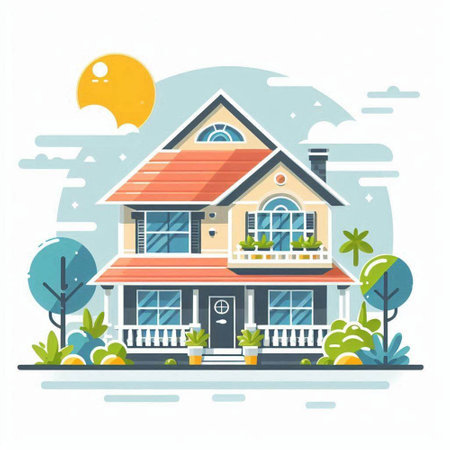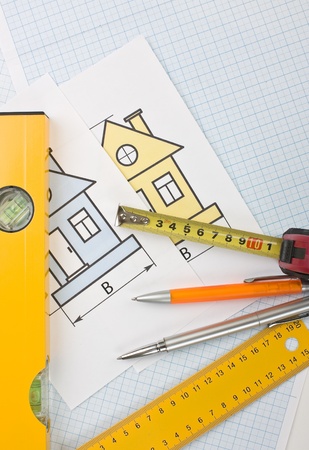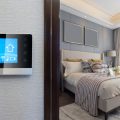1. Introduction to Voice-Controlled Smart Homes
Voice-controlled smart homes are becoming an essential part of modern living in the United States. These systems allow homeowners to manage devices like lights, thermostats, security systems, and even appliances using simple voice commands through platforms such as Amazon Alexa, Google Assistant, or Apple’s Siri.
The concept of smart home automation has been around for decades, but voice control has brought a new level of convenience and accessibility. In the early 2000s, smart home technology was primarily used by tech enthusiasts or luxury homeowners due to high costs and complexity. However, over the years, advancements in artificial intelligence (AI), cloud computing, and affordable smart devices have made this technology more user-friendly and accessible to average households.
Today’s voice-controlled systems are designed to be intuitive and easy to integrate into daily life. Many American homeowners appreciate the hands-free control it offers—whether its adjusting the thermostat while cooking or turning off lights from bed. As remote work becomes more common and people spend more time at home, these systems are not only seen as a convenience but also as a tool for enhancing comfort, safety, and energy efficiency.
Why Voice-Controlled Smart Homes Are Gaining Popularity
Several factors contribute to the rising adoption of voice-controlled smart homes in the U.S. housing market:
| Factor | Description |
|---|---|
| Convenience | Users can control multiple devices using simple voice commands without needing physical interaction. |
| Accessibility | Helps seniors and individuals with mobility challenges operate home systems more easily. |
| Affordability | The cost of smart speakers and compatible devices has dropped significantly in recent years. |
| Integration | Many devices now work seamlessly with major platforms like Alexa, Google Assistant, and Siri. |
| Energy Efficiency | Smart controls help reduce energy use by automating lighting and climate settings based on occupancy or time of day. |
| Security Enhancements | Voice commands can be used to arm security systems or check camera feeds instantly. |
As technology continues to evolve, voice-controlled smart homes are expected to become even more advanced, making them a standard feature in many American households—not just a luxury for tech-savvy users.
2. Emerging Trends in Voice-Activated Technology
Voice-controlled smart homes are becoming more advanced every year, thanks to rapid developments in technology. From smarter artificial intelligence (AI) to better compatibility with home devices, these trends are shaping the future of how we interact with our living spaces using just our voice.
Smarter AI Integration
One of the biggest trends in voice tech is the use of more powerful AI. Smart assistants like Amazon Alexa, Google Assistant, and Apple’s Siri are getting better at learning user behavior, preferences, and routines. This allows them to offer more personalized experiences, such as suggesting lighting scenes based on your mood or adjusting the thermostat depending on your daily schedule.
Improved Natural Language Processing (NLP)
Natural Language Processing is what helps voice assistants understand what youre saying. Thanks to advancements in NLP, these systems can now understand more complex commands and respond in a way that feels more natural and human-like. For example, instead of saying “Turn off the kitchen lights,” you can say “Im going to bed,” and the system will know to turn off all the lights and lock the doors.
Expanded Compatibility with Smart Devices
Another exciting trend is the growing number of smart appliances and home systems that work with voice control. Whether its a refrigerator that tells you when youre out of milk or a washer that starts a cycle when you ask, more devices are joining the voice-controlled ecosystem.
Examples of Voice-Compatible Devices
| Device Type | Voice-Controlled Features |
|---|---|
| Smart Thermostats | Adjust temperature, set schedules |
| Smart Refrigerators | Create shopping lists, check inventory |
| Lighting Systems | Dimming, color changing, scene setting |
| Security Systems | Arm/disarm alarms, check camera feeds |
| Laundry Machines | Start/stop cycles, monitor load status |
Toward Seamless Home Automation
The ultimate goal of these emerging trends is to create a seamless experience where your home anticipates your needs. With better AI, improved language understanding, and broader device compatibility, voice-controlled smart homes are moving closer to becoming truly intuitive living spaces.
This evolution not only adds convenience but also makes homes more energy-efficient and accessible for everyone—from busy parents to elderly homeowners looking for easier ways to manage daily tasks.

3. Benefits for Homeowners and Renters
Voice-controlled smart home technology is transforming the way people live, offering a range of benefits that appeal to both homeowners and renters. From making daily tasks easier to improving home energy efficiency, this technology brings convenience and comfort to everyone. Lets explore some of the key advantages.
Enhanced Convenience
One of the biggest perks of voice-controlled smart homes is the convenience they offer. You can control lights, thermostats, appliances, and even door locks just by speaking simple commands. Whether youre cooking in the kitchen or relaxing on the couch, you don’t have to stop what youre doing to operate devices manually.
Common Voice Commands That Simplify Daily Life:
| Task | Example Voice Command |
|---|---|
| Turn on/off lights | “Hey Alexa, turn off the living room lights.” |
| Adjust thermostat | “Hey Google, set the temperature to 72 degrees.” |
| Play music or podcasts | “Alexa, play my chill playlist.” |
| Create reminders | “Siri, remind me to take out the trash at 7 PM.” |
Energy Efficiency
Smart home systems can help reduce energy consumption by allowing better control over lighting, heating, and cooling. Voice assistants can be integrated with smart thermostats and lights to automatically adjust settings based on your preferences or schedule.
Energy-Saving Features:
- Smart Thermostats: Automatically lower heating or cooling when no one is home.
- Lighting Control: Turn off unused lights with a simple command.
- Routine Settings: Set daily routines that manage energy use efficiently.
Accessibility for Seniors and People with Disabilities
This technology is especially helpful for seniors and individuals with mobility challenges or disabilities. Voice commands reduce the need to physically interact with devices like switches, knobs, or remotes.
Main Accessibility Benefits:
- No Need for Physical Movement: Operate devices without getting up or reaching across rooms.
- Easier Communication: Use voice assistants to make phone calls or send messages.
- Error-Free Reminders: Set medication reminders and daily schedules hands-free.
A Win for Both Owners and Renters
You dont have to own a home to enjoy these features. Many smart home devices are portable and easy to install without major wiring changes, making them ideal for renters too. Plus, with more properties being marketed as “smart-ready,” tenants are increasingly expecting this tech in modern rentals.
The growing popularity of voice-controlled smart homes shows how technology can improve everyday life—making it easier, more efficient, and accessible for all kinds of users.
4. Challenges and Limitations
While voice-controlled smart homes offer convenience and futuristic appeal, they also come with a set of challenges that homeowners should be aware of. From privacy issues to technical hiccups, understanding these limitations can help users make informed decisions.
Data Privacy Concerns
One of the biggest concerns surrounding voice-controlled devices is how they handle personal data. These devices are always listening for wake words, which means they can potentially capture private conversations unintentionally. Many users worry about who has access to this data and how it’s being used by companies.
Cybersecurity Risks
Any device connected to the internet can be vulnerable to hacking. Smart home systems are no exception. If not properly secured, these systems could give hackers access to sensitive information or even control over your home’s functions like door locks, lighting, and security cameras.
Common Security Risks
| Risk | Description |
|---|---|
| Unauthorized Access | Hackers gaining control over devices through weak passwords or outdated firmware. |
| Eavesdropping | Devices picking up conversations that could be stored or analyzed without consent. |
| Data Breaches | Personal data exposed due to poor cloud storage security practices. |
Technical Glitches and Compatibility Issues
No technology is perfect, and voice-controlled smart homes are no exception. Sometimes devices don’t respond correctly or misunderstand commands. In addition, integrating products from different brands can lead to compatibility problems, making it harder for everything to work smoothly together.
Examples of Common Technical Issues:
- Mismatched Commands: Devices misinterpreting or ignoring voice instructions.
- Delayed Responses: Slow system reactions due to network lag or server issues.
- Lack of Updates: Older devices may not receive software updates needed for optimal performance.
User Adoption Barriers
A lot of people still find smart home technology intimidating or unnecessary. Older generations might struggle with learning how to use voice commands effectively, while others may be skeptical about the reliability and cost of these systems.
Main Barriers to Adoption
| User Concern | Description |
|---|---|
| Lack of Tech Skills | Younger users adapt faster; older adults may need more time and support. |
| Skepticism About Value | Doubt over whether smart features justify the investment. |
| Privacy Fears | Anxiety about being monitored or recorded at home deters some users. |
Tackling these challenges will be essential for voice-controlled smart homes to reach their full potential in mainstream American households.
5. The Future Outlook and Market Growth
The future of voice-controlled smart homes in the U.S. looks promising as technology continues to evolve and integrate more seamlessly into everyday life. With growing consumer interest, increased investment in smart technologies, and an evolving regulatory landscape, the industry is poised for significant growth over the next decade.
Consumer Trends Shaping the Market
American homeowners are increasingly embracing smart home devices that offer convenience, efficiency, and enhanced security. Voice control systems like Amazon Alexa, Google Assistant, and Apple’s Siri are becoming household staples.
Key Consumer Preferences:
| Feature | Consumer Interest (%) |
|---|---|
| Voice-activated lighting and climate control | 72% |
| Smart security systems with voice integration | 68% |
| Appliance automation via voice commands | 59% |
| Energy-saving features through voice assistants | 65% |
Investment Opportunities in Smart Home Technology
The smart home sector is attracting substantial venture capital and corporate investments. Areas like AI-driven personalization, interoperability between devices, and cloud-based home management platforms are hot spots for innovation.
Top Investment Segments:
- AI-Powered Voice Assistants: Enhancing user interaction through natural language processing and learning algorithms.
- Home Security Integrations: Combining cameras, locks, alarms, and voice commands for smarter protection.
- Sustainable Smart Devices: Eco-friendly appliances that respond to voice commands while reducing energy use.
Potential Regulatory Developments
As voice-controlled smart homes become more widespread, U.S. regulatory agencies may introduce new standards around privacy, data usage, and device interoperability. These regulations aim to protect consumers while encouraging innovation.
Possible Regulatory Focus Areas:
- User Data Privacy: Clearer guidelines on how companies collect and store voice data.
- Device Compatibility Standards: Ensuring various brands can work together within one smart home ecosystem.
- Security Protocols: Mandating stronger cybersecurity measures to prevent hacking or unauthorized access.
The outlook for voice-controlled smart homes in the U.S. is filled with opportunity. As consumer demand grows and technology becomes more refined, we can expect smarter, safer, and more connected living environments across the country.

